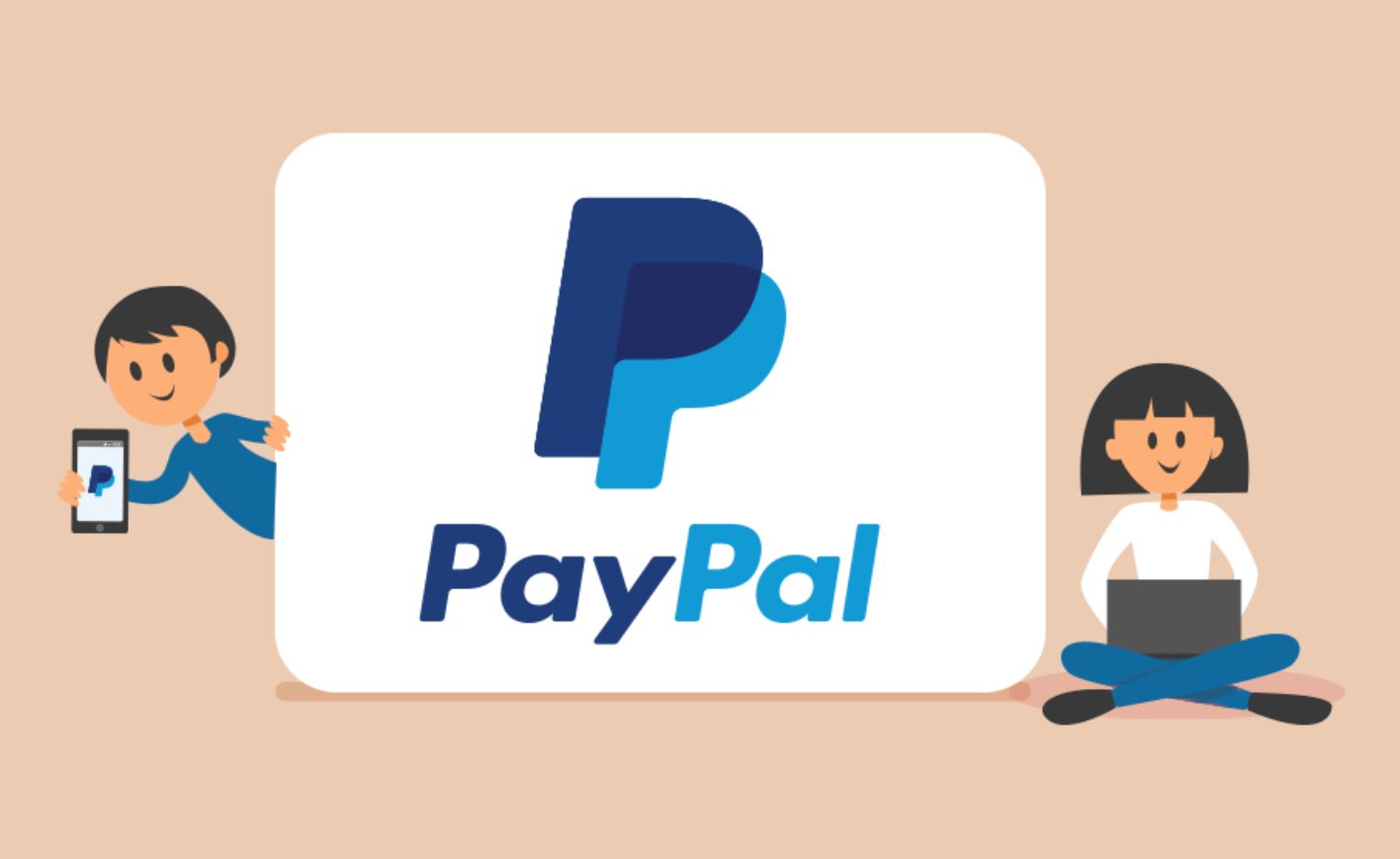Introduction
Welcome to the exciting world of fintech! Over the past decade, fintech has revolutionized the way we manage our finances, make payments, and access financial services. Fintech, short for financial technology, refers to the use of technology to offer innovative financial solutions.
The rapid advancement of technology and the increasing demand for convenient and user-friendly financial services have paved the way for numerous fintech companies to enter the market. These companies range from mobile payment providers to robo-advisors and peer-to-peer lending platforms.
But have you ever wondered how fintech companies make money? It’s a valid question, considering many of these services are offered for free or at a low cost to users. In this article, we will explore the various revenue models that fintech companies employ to generate income and sustain their operations.
By understanding these revenue models, we can gain insights into the strategies fintech companies use to monetize their offerings while delivering value to their customers. So, let’s dive in and explore the fascinating world of fintech revenue models!
What is Fintech?
Fintech, a combination of the words “financial” and “technology,” refers to the application of technology in the financial sector to create innovative solutions and improve the delivery of financial services. Fintech companies leverage technology to offer a wide range of financial products and services, catering to individual consumers, businesses, and even governments.
Traditionally, accessing financial services involved visiting brick-and-mortar banks, filling out lengthy paperwork, and waiting in long queues. Fintech disrupts this traditional model, offering convenient and accessible alternatives. With fintech, individuals can now manage their finances, transfer money, invest, and even obtain loans from the comfort of their smartphones or computers.
Fintech companies utilize cutting-edge technologies such as artificial intelligence, blockchain, mobile apps, and cloud computing to streamline processes, enhance security, and provide personalized experiences to users. These technologies enable faster transactions, lower costs, increased transparency, and improved financial literacy.
Examples of fintech services include:
- Mobile payment applications like PayPal, Venmo, and Apple Pay, which allow users to send and receive money conveniently through their smartphones.
- Robo-advisors, such as Betterment and Wealthfront, which provide automated and algorithm-based investment advice to help individuals manage their portfolios.
- Peer-to-peer lending platforms like LendingClub and Prosper, which connect borrowers directly with lenders, eliminating the need for traditional banks.
- Digital banking services like Chime and Revolut, which offer online banking solutions without the need for physical branches.
Fintech has democratized finance, making financial products and services accessible to a wider audience. It has also revolutionized the way businesses handle payments, manage cash flow, and raise capital. Ultimately, fintech is reshaping the financial industry, promoting innovation, and driving efficiency and convenience for users.
Different Revenue Models in Fintech
While many fintech services are offered for free or at a low cost to users, fintech companies employ various revenue models to generate income. Let’s explore some of the common ways these companies monetize their offerings:
Transaction Fees
One of the primary revenue models in fintech is charging transaction fees. Fintech companies may impose a small fee on each transaction made through their platform. For example, peer-to-peer payment apps like Venmo charge a nominal fee for transferring money instantly to a linked bank account or debit card.
Subscription Models
In the subscription-based revenue model, fintech companies charge users a recurring fee for accessing premium features or advanced services. This model is commonly seen in budgeting apps, financial planning platforms, and investment advisory services. Users can access basic features for free but have the option to upgrade to a paid subscription for additional benefits and personalized financial advice.
Advertising and Partnerships
Fintech companies may leverage advertising and partnerships as a source of revenue. They can display targeted ads within their platforms or collaborate with other businesses to promote financial products and services. For instance, a personal finance app may partner with credit card companies or banks, earning a commission for referring users to their services.
Data Monetization
Fintech companies collect vast amounts of user data, which can be anonymized and aggregated to derive valuable insights. This data can be leveraged for monetization through selling analytics to third parties, such as banks or financial institutions, who can use it to make informed decisions and improve their offerings.
Financial Product Sales
Some fintech companies generate revenue by offering and selling their own financial products. This may include digital wallets, prepaid cards, and investment products. They earn commissions or fees when users purchase or invest in these products through their platform. For example, a fintech company offering a robo-advisor service may charge a management fee on the total value of the user’s investment.
Crowdfunding
Crowdfunding has gained popularity in recent years as a revenue model for fintech companies. By allowing users to invest in a project or startup, fintech platforms earn a percentage of the funds raised as a fee. This model not only generates income for the platform but also provides individuals with opportunities to invest in innovative ventures.
Licensing and White-labeling
Sometimes, fintech companies choose to license their technology or white-label their products to other businesses. They receive licensing fees or royalties for allowing other companies to use their technology or brand their products as their own. This revenue model enables fintech companies to reach a broader market and expand their product offerings.
These are just a few examples of the revenue models employed by fintech companies. It’s important to note that companies may utilize a combination of these models or explore other innovative approaches to generate income and ensure long-term sustainability.
Transaction Fees
Transaction fees are a common revenue model utilized by fintech companies in various sectors. Many fintech platforms charge a small fee for each transaction made through their platform, allowing them to generate income while providing users with convenient financial services. Let’s take a closer look at how transaction fees contribute to the revenue stream of fintech companies:
One prominent example of transaction fees is seen in peer-to-peer payment applications like Venmo. Venmo allows users to send money to friends, family, or businesses directly from their bank account or debit card. While sending money to an individual is typically free, Venmo charges a small fee when users choose to transfer funds instantly to their linked bank account or debit card. This transaction fee provides Venmo with a revenue stream as users opt for the convenience of immediate access to their funds.
In the cryptocurrency sector, trading platforms often charge transaction fees for buying and selling digital currencies. These fees can vary and are usually a percentage of the transaction amount. Cryptocurrency exchanges make use of these transaction fees to cover operating costs and generate revenue.
Other fintech platforms may charge transaction fees for specific services within their offerings. For instance, online investment platforms and robo-advisors may charge a fee for executing trades on behalf of investors. This fee is usually a percentage of the total transaction value, allowing the fintech company to generate income while providing users with automated investment services.
Transactional fees are not limited to individual users – they can also be imposed on businesses. Fintech platforms that facilitate business-to-business transactions may charge transaction fees based on the volume or value of transactions processed. These fees serve as a revenue source for the platform while offering businesses the convenience of streamlined payment processes.
Transaction fees play a crucial role in the revenue model of fintech companies. By charging a small percentage or fixed fee for each transaction, these companies can generate steady income while providing users with efficient and convenient financial services. While transaction fees may seem minimal on an individual basis, the cumulative effect of a large number of transactions can result in substantial revenue for fintech companies.
It is important to note that fintech companies need to strike a balance between charging reasonable transaction fees and ensuring their services remain affordable and competitive. By offering value-added features and exceptional user experiences, fintech companies can justify the transaction fees charged and maintain user satisfaction.
Subscription Models
Subscription models are a popular revenue model employed by fintech companies to generate income. With this model, fintech platforms offer basic services for free and provide users with the option to upgrade to a paid subscription for additional features, enhanced functionality, and personalized experiences. Let’s explore how subscription models contribute to the revenue stream of fintech companies:
Many budgeting and financial planning apps utilize subscription models. These apps offer essential budgeting and expense tracking features for free, allowing users to get started without any upfront cost. However, they also offer premium subscription plans that provide advanced features such as customized budget categories, financial goal tracking, and detailed spending analytics. Users who opt for the premium subscription pay a monthly or annual fee to access these enhanced features and enjoy a more comprehensive financial management experience.
Financial advisory platforms, including investment management services and robo-advisors, also employ subscription models. These platforms typically offer a basic tier of service that includes automated investment advice and rebalancing for free or at a low cost. However, they provide advanced features like tax-loss harvesting, personalized portfolio strategies, and access to financial advisors for users who upgrade to a paid subscription. The subscription fee covers the additional services and expertise provided, allowing the fintech platform to generate revenue.
Subscription models are not limited to individual consumers. Fintech companies catering to businesses may also offer subscription plans. For example, accounting software platforms may provide basic bookkeeping features for free, but offer premium subscriptions that include more advanced accounting functionalities, integrations with other software, and dedicated customer support. Businesses that require these additional features can choose to upgrade to the paid subscription, creating a revenue stream for the fintech platform.
One advantage of subscription models is the recurring revenue they generate. By offering ongoing value to users and providing them with a reason to continue their subscription, fintech companies can ensure a steady and predictable income stream. This, in turn, enables them to invest in product development, customer support, and other areas to continuously improve their offerings.
It is important for fintech companies utilizing subscription models to strike a balance between providing valuable features in the paid tier and maintaining a competitive pricing structure. By understanding their target audience’s needs and preferences, fintech companies can offer subscription plans with pricing that reflects the value they provide, ensuring that users perceive the benefits of upgrading as worth the cost.
Subscription models not only allow fintech companies to generate revenue but also foster a sense of loyalty and engagement among users. When users are invested in their subscription, they are more likely to continue using the platform, providing valuable feedback, and recommending it to others. This creates a positive cycle of growth and sustainability for the fintech company.
Advertising and Partnerships
Advertising and partnerships are revenue streams employed by fintech companies to generate income. These models involve collaborating with other businesses and displaying targeted advertisements within their platforms. Let’s explore how advertising and partnerships contribute to the revenue stream of fintech companies:
One way fintech companies generate revenue is by displaying targeted advertisements within their platforms. By offering a platform with a large user base and valuable user data, fintech companies have the opportunity to connect businesses with their target audience. For example, a personal finance app may display ads from credit card companies or insurance providers that are relevant to users based on their financial profile and spending habits. These businesses pay the fintech company for the exposure and potential customer conversions they receive through the platform.
In addition to advertising, fintech companies often form partnerships with other businesses to generate revenue. These partnerships can take various forms, such as affiliate marketing or referral programs. For instance, a fintech platform that offers savings accounts may partner with a bank, earning a commission for each user who opens a savings account through their referral. This type of partnership benefits both the fintech company and the partner business, as it drives customer acquisition for the bank while providing the fintech platform with a source of income.
Fintech companies may also enter into strategic partnerships with established financial institutions. These collaborations often involve sharing technology, data, or expertise to enhance the financial services offered by both parties. For example, a fintech company specializing in analytics and risk assessment may partner with a bank to improve their credit underwriting process. In such cases, the fintech company earns revenue by licensing their technology or providing consulting services to the bank.
Furthermore, fintech companies can explore product integration partnerships to expand their offerings and increase revenue. For example, a budgeting app may partner with a payment provider and integrate their services, allowing users to make payments directly from within the app. This integration not only enhances the user experience but also provides a revenue share or referral fee to the fintech company for each transaction facilitated through the integration.
Advertising and partnerships offer a valuable revenue stream for fintech companies while providing additional benefits to the users of their platforms. By carefully selecting relevant advertisements and forming strategic partnerships, fintech companies can ensure that the advertisements and partnerships align with their users’ needs and preferences. This approach minimizes disruptions to the user experience while maximizing the potential for revenue generation.
It is worth noting that fintech companies need to strike a balance between displaying advertisements and maintaining the trust of their users. Transparency and ensuring that the ads and partnerships are aligned with the users’ best interests are crucial for maintaining a positive user experience and fostering a long-term relationship with users.
Data Monetization
Data monetization is a revenue model commonly employed by fintech companies to generate income by leveraging the vast amount of user data they collect. Through data analytics and insights, fintech companies can extract value from the data and offer it to third parties, such as financial institutions and market research firms. Let’s explore how data monetization contributes to the revenue stream of fintech companies:
Fintech companies collect a wealth of user data as individuals interact with their platforms. This data includes transaction history, spending patterns, investment preferences, and other financial information. By anonymizing and aggregating this data, fintech companies can derive valuable insights and statistics that can be of significant interest to various stakeholders.
One way data monetization occurs is through selling anonymized data to financial institutions. Banks and other financial institutions can utilize this data to analyze consumer behavior, identify market trends, and make informed decisions regarding product offerings and marketing strategies. For example, a fintech company specializing in personal finance management may sell aggregated data to a bank, enabling the bank to better understand their customers’ financial needs and tailor their services accordingly.
In addition to financial institutions, market research firms and data analytics companies are also potential buyers of fintech company data. These companies rely on accurate and comprehensive data to provide insights to their clients. By monetizing their data, fintech companies can contribute to market research efforts and provide valuable information that helps shape business strategies in various industries.
Data monetization can take different forms, depending on the agreements and partnerships established by fintech companies. They may sell data on a one-time basis or enter into ongoing data licensing agreements that provide a continuous revenue stream. The terms and conditions surrounding the sale and usage of data are typically carefully negotiated to ensure the privacy and security of users’ information.
It is essential for fintech companies to prioritize data protection and security when engaging in data monetization. Robust privacy measures and compliance with data protection regulations are crucial to maintain trust with users. Companies must ensure that the data they sell or share with third parties is properly anonymized and aggregated, so no personally identifiable information is disclosed.
By monetizing data, fintech companies can not only enhance their revenue stream but also contribute to the development of the financial industry as a whole. The insights derived from the data can lead to the creation of better financial products and services, improved customer experiences, and more accurate risk assessments. However, it is crucial that data monetization is conducted ethically and with the utmost consideration for user privacy.
Financial Product Sales
Financial product sales are a key revenue stream for many fintech companies. In addition to providing innovative technology and platforms, fintech companies often offer their own financial products to users. These products can range from digital wallets and prepaid cards to investment opportunities and insurance policies. Let’s explore how financial product sales contribute to the revenue stream of fintech companies:
One way fintech companies generate income is through the sale of their own digital wallets or payment solutions. These wallets allow users to store money electronically, make payments, and transfer funds conveniently. Fintech companies may earn revenue by charging transaction fees for using their digital wallet or by offering premium features and services for a subscription fee.
Fintech companies may also offer their own prepaid cards, which users can load with funds and use for various purposes. These cards are often linked to the company’s platform and can be used for online purchases or in-person transactions. Fintech companies earn revenue through transaction fees charged when users make purchases using their prepaid cards.
Investment products are another area where fintech companies can generate revenue. Robo-advisors, for instance, offer automated investment services based on algorithms and user-defined preferences. Fintech companies charge management fees based on the total value of assets under management, earning revenue as users invest and grow their portfolios.
Insurance is another financial product that fintech companies may offer to users. For example, insurtech companies leverage technology to streamline the insurance application process and provide personalized coverage options. Fintech companies earn revenue through premiums paid by users for insurance policies, with a portion serving as their profit margin.
By selling their own financial products, fintech companies can create a holistic ecosystem where users can access a variety of financial services within a single platform. This convenience not only drives user engagement but also provides additional revenue opportunities. Users who trust and rely on the fintech platform for one financial product are more likely to explore other offerings within the platform.
Furthermore, fintech companies often partner with established financial institutions to offer a wider range of financial products. These partnerships allow fintech companies to expand their product offerings without the need for extensive regulatory approvals or infrastructure. By offering financial products from partnering institutions, fintech companies earn commissions or fees for facilitating the sale of these products.
The revenue generated through financial product sales allows fintech companies to continue innovating, improving their existing offerings, and expanding their product lines. By providing users with convenient access to financial products within their platforms, fintech companies can capitalize on the trust and engagement they have established and create sustainable revenue streams.
Crowdfunding
Crowdfunding has emerged as a popular revenue model for fintech companies, providing a means to generate income while also empowering individuals to invest in innovative projects and startups. Crowdfunding platforms connect investors with entrepreneurs seeking funding, enabling the general public to participate in the financing of new ventures. Let’s explore how crowdfunding contributes to the revenue stream of fintech companies:
Through crowdfunding platforms, entrepreneurs can showcase their projects and seek financial support from a large pool of potential investors. Fintech companies offering crowdfunding services earn revenue by charging a percentage of the funds raised as a fee. This fee serves as compensation for providing the platform, facilitating transactions, and maintaining investor protections.
Crowdfunding platforms vary in their fee structures, with some charging a fixed percentage based on the total funds raised, while others may employ a tiered fee structure where the percentage decreases as the amount raised increases. Additionally, some platforms may impose fees on successful campaigns only, while others charge fees regardless of the outcome. The fee structure and pricing model are determined by the fintech company based on market dynamics and competition.
Crowdfunding platforms offer advantages both for entrepreneurs seeking funding and for investors looking for investment opportunities. Entrepreneurs gain access to a wider network of potential investors, bypassing traditional sources of funding such as venture capital firms or banks. Investors, on the other hand, can invest small amounts of money in projects that align with their interests, potentially gaining financial returns or other benefits such as early access to products.
Equity crowdfunding is a variation of crowdfunding that allows investors to acquire a stake in the company they support. Fintech companies offering equity crowdfunding services enable individuals to invest in startups and early-stage companies in exchange for equity shares. These platforms earn revenue by charging a percentage of the funds raised and may also charge additional fees for services like due diligence and legal compliance.
Crowdfunding not only serves as a revenue stream for fintech companies but also fosters innovation and democratizes investment opportunities. It enables individuals who may not have access to traditional financing channels to support projects they believe in and potentially earn financial returns. Crowdfunding also benefits entrepreneurs by providing a platform to showcase their ideas and access capital outside of traditional funding routes.
Fintech companies operating crowdfunding platforms must establish trust and ensure transparency between campaign owners and investors. This involves implementing robust due diligence processes, verifying the authenticity of campaigns, and providing clear information about risks and potential returns. Maintaining a strong reputation and instilling confidence in the platform’s credibility is crucial to ensure continued participation from both entrepreneurs and investors.
Overall, crowdfunding provides a unique revenue stream for fintech companies, offering a win-win opportunity for both entrepreneurs and investors. By facilitating the funding of innovative projects, fintech companies can not only generate income but also contribute to the growth and development of groundbreaking ideas and ventures.
Licensing and White-labeling
Licensing and white-labeling are revenue models employed by fintech companies that involve offering their technology or products to other businesses. These models allow fintech companies to generate income by licensing their technology or allowing other companies to rebrand and offer their products as their own. Let’s explore how licensing and white-labeling contribute to the revenue stream of fintech companies:
Fintech companies often invest significant resources in developing cutting-edge technology and innovative solutions. Through licensing, these companies can monetize their technology by granting other businesses the right to use it. Licensing agreements typically involve the fintech company receiving licensing fees or royalties in exchange for allowing others to leverage their technology.
Licensing can take different forms depending on the nature of the technology and the agreement between the fintech company and the licensee. For example, a fintech company that has developed a sophisticated fraud detection system may license the technology to banks or other financial institutions, enabling them to enhance their security measures. In return, the fintech company receives licensing fees based on the usage or value derived from their technology.
In addition to licensing, fintech companies may engage in white-labeling. White-labeling involves allowing another company to rebrand and offer their products or services under their own brand. Fintech companies can provide a white-label solution that hosts the platform and technology while allowing the partner company to customize the user interface, brand it as their own, and offer it to their customers.
White-labeling is particularly common in the banking and payments sector, where financial institutions seek to offer modern and user-friendly digital banking solutions without building their own technology from scratch. Fintech companies that specialize in providing white-label solutions enable these institutions to leverage their technology and offer a branded digital banking experience to customers. In return, the fintech company earns revenue through licensing fees or a revenue-sharing model.
White-labeling benefits both the fintech company and the partnering business. Fintech companies gain new revenue streams by selling their technology to multiple partners, while partnering businesses can quickly deploy innovative solutions and enhance their product offerings without the high cost of developing their own technology.
Licensing and white-labeling models require trust and collaboration between fintech companies and their partners. Fintech companies must demonstrate the reliability, scalability, and support of their technology to attract partners. They also need to provide ongoing support, updates, and maintenance to ensure the success of the white-labeled product or solution.
By leveraging licensing and white-labeling models, fintech companies can extend their market reach and generate revenue beyond their own customer base. These models enable them to monetize their expertise, technology, and intellectual property while offering valuable solutions to other businesses in the financial industry.
Conclusion
Throughout this article, we have explored various revenue models that fintech companies employ to generate income and sustain their operations. Fintech companies have disrupted the traditional financial landscape by leveraging technology to offer innovative solutions and improve the delivery of financial services. By understanding these revenue models, we can gain insights into the strategies fintech companies use to monetize their offerings while delivering value to their customers.
We started by defining fintech as the application of technology in the financial sector to create innovative solutions. Fintech companies have transformed the way we manage our finances, make payments, and access financial services, making them more convenient and accessible.
We then delved into different revenue models in fintech, starting with transaction fees. Many fintech platforms charge a small fee for each transaction made through their platform, providing them with a consistent revenue stream.
Subscription models also play a significant role in the revenue generation of fintech companies. By offering basic services for free and providing users with the option to upgrade to paid subscriptions for enhanced features and personalized experiences, fintech companies can ensure a steady and predictable income stream.
Advertising and partnerships serve as another revenue stream for fintech companies. By displaying targeted ads and forming partnerships with other businesses, fintech companies can monetize their platforms while offering relevant products and services to their users.
Data monetization is a revenue model that involves selling anonymized and aggregated user data to third parties. Fintech companies can leverage the valuable insights derived from the data to generate revenue and contribute to decision making in various industries.
Financial product sales are another important revenue source for fintech companies. By offering their own financial products such as digital wallets, prepaid cards, investment opportunities, and insurance policies, fintech companies can create a holistic ecosystem while generating income.
Crowdfunding allows fintech companies to generate revenue by connecting entrepreneurs seeking funding with a large pool of potential investors. Fintech platforms earn fees by facilitating transactions and maintaining investor protections, while also fostering innovation and democratizing investment opportunities.
Lastly, licensing and white-labeling provide fintech companies with revenue by allowing other businesses to use their technology or rebrand their products as their own. These models enable fintech companies to extend their market reach, generate income from multiple partners, and offer valuable solutions to businesses in the financial industry.
In conclusion, the revenue models employed by fintech companies are diverse and multifaceted. By implementing various strategies and exploring different revenue streams, fintech companies can generate income while providing innovative financial solutions to individuals, businesses, and governments. The continuous evolution of fintech and its revenue models will undoubtedly shape the future of the financial industry as we know it.

























